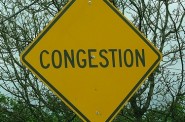Why Milwaukee Needs a Streetcar
Across the globe cities embrace transit, reject freeways in urban areas.
In 1945, at the end of WW II, Milwaukee had 350 miles of streetcar lines and 198 miles of interurban electric trains that served Burlington, East Troy, Waukesha and Sheboygan. In addition passenger trains connected to Madison, Green Bay, Chicago and beyond. There were over 80 round trips to Chicago provided by the Milwaukee Road, the Northwestern RR and the electric North Shore Line. In addition there were 110 miles of electric bus lines run by the Milwaukee Transit Lines. All of this service was privately-owned and paid substantial state and local taxes.
In the post-war era, the US government spent huge sums on road building and zero on transit and trains. The State of Wisconsin likewise concentrated dollars on road building. By 1956 the Feds contributed 90% to the Interstate highways while states contributed 10%. Cities need not pay anything.
In the rest of the developed world, moneys were spent in a more balanced way on transit, trains and roads. In the US. government transportation dollars were spent almost exclusively on highways. In America, between subsidies to road building and taxes paid by transit and passenger railroads. the incentive was to shut down transit and train facilities.
In Milwaukee all streetcars, interurbans and electric buses were gone by 1964.
By the mid-1970s, the main north-south and east-west freeways were built. I-94 from Marquette to 100th Street was built over the Interurban right of way that once connected the western suburbs with downtown.
By contrast, most West European cities and some in Canada (Vancouver and Winnipeg) have no freeways inside their city boundaries and have thriving neighborhoods and downtowns.
More people are coming to realize that big roads disrupt the complex economic and social structure of cities while transit adds value. Freeway removals are becoming more common. Paris, France had only one freeway segment which was removed last year. Seoul, South Korea has removed 13 segments of freeway in the last 10 years. Seoul has a vast rail transit network and one of the strongest economies in Asia.
Later the Federal government did start putting relatively small amounts into transit while still allocating most of its transportation money for big road projects. Now, because the Congress failed to raise the gas tax, Federal revenue covers only a small portion of road costs and an even smaller proportion of transit. Now states and particularly cities are increasingly on their own. Hence when spending what money they have, they should spend it on infrastructure that adds value.
For large and medium size cities that means maintaining street grids and sidewalks, expanding transit and facilitating biking. Cities like Portland, Dallas, Charlotte, Atlanta, Seattle, Salt Lake City and dozens of others have built rail transit lines. No city that has streetcars or other rail facilities are contemplating removing them.
Kansas City, a city with less population density than Milwaukee, recently built a streetcar line which has become quite popular and successful.
I support the Milwaukee Streetcar. It begins the restoration of a system that served Milwaukee’s people and property during the period of the city’s greatest prosperity and growth.
I would also support expansion of passenger train service (the Milwaukee-Mad City High Speed Train was a great idea). I would also support Light Rail (same as streetcar only on its own right of way), electric bus or BRT. They would all add value to Milwaukee unlike the freeways which damaged the city badly and unnecessarily.
If the billions of dollars spent expanding the Marquette and Zoo interchanges had been spent on transit, Milwaukee would be much more likely to have added tax revenue to support and expand city services.
Former Milwaukee Mayor John Norquist (1988-2004) was a passionate advocate of light rail and opponent of freeway expansion in the city.
More about the Milwaukee Streetcar
For more project details, including the project timeline, financing, route and possible extensions, see our extensive past coverage.
- Another Streetcar Collision - Jeramey Jannene - Jun 27th, 2025
- Streetcar Hit By Apparent Red Light Runner - Jeramey Jannene - Jun 16th, 2025
- Streetcar Will Run On Consolidated Route During Summerfest - Jeramey Jannene - Jun 11th, 2025
- City Hall: Milwaukee Must Replace Failing Streetcar Switches - Jeramey Jannene - Feb 24th, 2025
- Streetcar Confronts Limited Funding, Operations Challenges - Evan Casey - Jan 22nd, 2025
- Council Kills Streetcar’s ‘Festivals Line’ - Jeramey Jannene - Jul 31st, 2024
- Streetcar Will Use Festivals-Oriented Route Through Summer - Jeramey Jannene - Jul 9th, 2024
- The Hop’s Lines Will Merge For Easier Summerfest Service - Jeramey Jannene - May 30th, 2024
- Streetcar Begins Daily Service To The Couture, BRT Will Soon Follow - Jeramey Jannene - Apr 11th, 2024
- Milwaukee’s Three Streetcar Extensions Need Mayoral Direction - Jeramey Jannene - Nov 8th, 2023
Read more about Milwaukee Streetcar here
Norquist
-
Trump Tariffs Will Hurt State Workers
 Mar 2nd, 2018 by John Norquist
Mar 2nd, 2018 by John Norquist
-
Trump Tariffs Will Hurt State Workers
 Feb 2nd, 2017 by John Norquist
Feb 2nd, 2017 by John Norquist
-
Is Traffic Always Bad?
 Aug 28th, 2013 by John Norquist
Aug 28th, 2013 by John Norquist
Transportation
-
MCTS Adds 28 New Buses
 Jul 13th, 2024 by Graham Kilmer
Jul 13th, 2024 by Graham Kilmer
-
MCTS Designing New Bus Shelters
 Jul 10th, 2024 by Graham Kilmer
Jul 10th, 2024 by Graham Kilmer
-
MCTS Updates RNC Bus Detours To Better Serve Downtown, Riders
 Jul 9th, 2024 by Jeramey Jannene
Jul 9th, 2024 by Jeramey Jannene






















Thanks, former mayor Norquist, for the positive words on our too long delayed streetcar. Your vision when you were our mayor is evident now that out Riverwalk has connected most of downtown with surrounding neighborhoods. I respect your research on the value of diversity of transportation options in urban areas.